Doi Mae Salong
Mae Salong’s early history centred on the the opium trade of the Golden Triangle. Its recent history was shaped by the 93rd Division of the Chinese Nationalist Army that refused to surrender to Chinese communists after the Nationalist Kuomintang government was routed in 1949. Unlike most of the unrelenting nationalists that fled to Taiwan in 1949, a force of 12,000 escaped from Yunnan to Burma and continued an insurgency against the Peoples’ Republic. They were at first supported by Taiwan and the USA, but diplomatic shifts—which included US ambivalence towards the nationalists and improved relations between Burma and communist China—later led to the partial disbanding of the nationalist forces in Burma. While thousands left for Thailand in 1961, many remained in Burma. The soldiers that settled in Mae Salong kept it as a military base in preparation for an eventual counter-attack against communist China. They funded their arms purchases with opium production and rubbed shoulders with notorious Burmese warlord and drug baron Khun Sa, who lived a few kilometres away in Ban Hin Taek and who initially trained with the Kuomintang before founding his own army. In the 1970s the Thai government struck a deal with the renegades: the battle-hardened soldiers would help them fight Thailand’s own communist insurgents in exchange for legitimacy and Thai citizenship. Part of their going straight involved the soldiers’ cessation of opium production in favour of the cultivation of mushrooms and above all oolong tea, which is now Mae Salong’s main product. Some guidebooks wax lyrical about today’s Mae Salong as a miniature Yunnanese Shangri-La, but if you come with this image in mind you may be a little disappointed: at first glance, Mae Salong looks much like the little Thai town it is, predominantly populated with Hill Tribe people and relocated Thai much more than Chinese. Nevertheless, the crisp climate, the lingering Chinese influence (although much of it commercial more than endemic), passable native Yunnanese dishes and small hotels and guesthouses catering to visitors still make this a popular getaway, worth visiting even on a hurried day trip, but well worth stopping in overnight. There are several four-story modern hotels completing construction (as of Nov 2013) which aim to capitalise on the first class views across the valley
Climate
In November, sunflowers bloom, but the peak tourist season is during December-February when the hills are alive with white plum blossoms and pinkish sakura cherry blossoms. It gets misty and cold during this time, so pack a sweater and decent shoes! Tea production gets into gear toward the end of this season, with the smell of roasting tea wafting through the streets, but the same haze and rising temperatures that affect the rest of northern Thailand are in evidence here too from March onward, and the rainy season from June to October is rainy indeed.
Sightseens:
Chinese Martyrs’ Memorial Museum. A tribute paid to the Kuomintang settlers of Mae Salong, who fought and sacrificed for Thailand. It exhibits the history of their struggle, along with developments of Mae Salong throughout the years. Reached by a well-signed turn-off from the southern road after the market, a short hike or quick motorbike trip. OTOP Agriculture Centre, (opposite Mae Salong Villa). This grandly named site — it’s actually just a mostly-closed hut, a map of tea plantations in the area, and a thermometer-equipped viewing point — is primarily handy for getting your bearings if you have your own wheels and want to do a round of the many tea plantations around the town. Phra Boromathat Chedi. A chedi (Thai-style stupa) built on a hill near Mae Salong village, in honour of the late Princess Mother, Srinagarindra. Next to the chedi is the Princess Mother Hall, a modern, Thai-style pavilion outwardly like a temple in appearance, but not containing any religious objects. There are good views across town and west towards Myanmar from up top. There are two ways up top: on foot, follow signs from the village center up the hill towards the Mae Salong Resort and Wat Santikhiri, turn to the right into a parking lot next to a smaller temple, and then go up the steep 719-step staircase. If you find yourself at the Resort, you have gone too far, back up to find the parking lot. One can also drive to the top, as there’s a winding, steep road that starts from behind the tourist market and curves up from behind, with breathtaking hilly views along the Myanmar border Tomb of General Tuan. The mausoleum of Mae Salong’s founder and erstwhile drug warlord, Kuomintang General Tuan Xi-Wen. Located at the end of a road beside a tea house with General Tuan’s name, up another steep staircase. There’s a small museum here, but unfortunately it’s all in Chinese. There are some tea houses nearby, and you can enjoy a spectacular view of Mae Salong there. Wat Santikhiri. A modern, standard-issue Thai temple guarding the approach path to the Phra Boromathat Chedi. The more interesting parts of the temple lies across the street leading to the Mae Salong Resort; peek inside for a nice little Chinese-style pavilion.
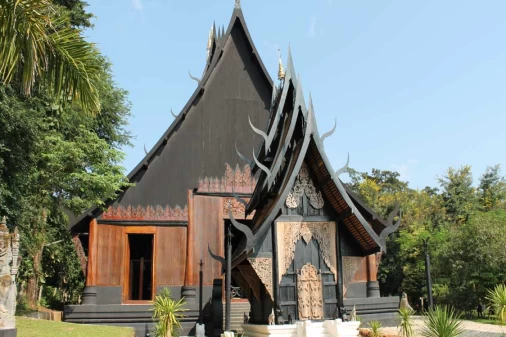
Baandam
Another of Chiang Rai’s more extraordinary sites, in a town that’s blessed with several rather eccentric...
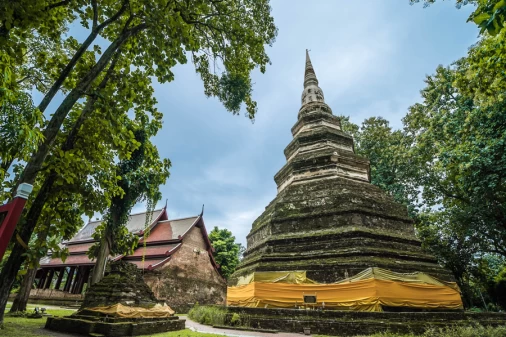
Chiang Saen
Once one of the major cities of the Lanna kingdom, it was originally called Wiang Hiran Nakhon Ngoen...
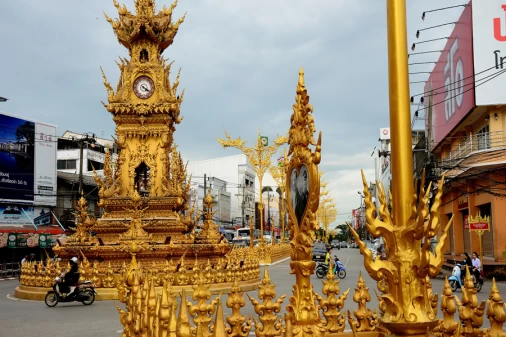
Clock Tower
When you look at all the travel guides and sites about Chiang Rai in Northern Thailand they always use...
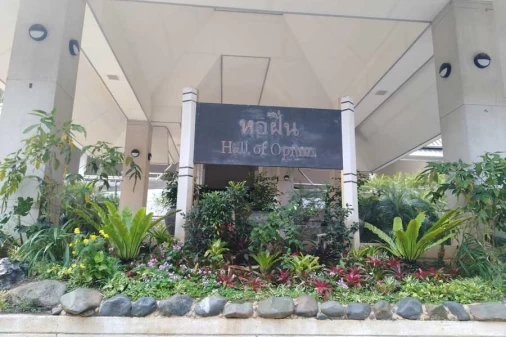
Hall of Opium
The Hall of Opium Museum is a combination of multimedia and exhibition to make learning more fun. Aiming...
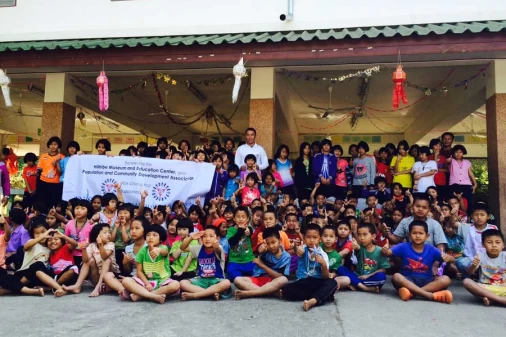
Hill Tribe Museum
Hilltribe Museum and Education Centre is run by a nonprofit organization called the Population and Community...
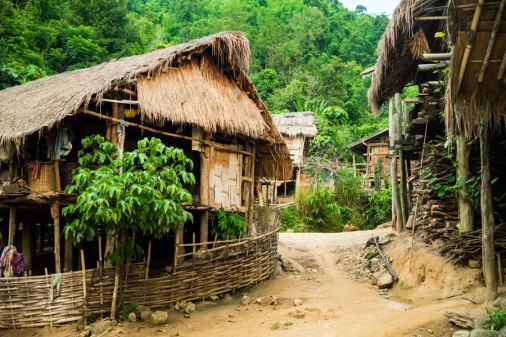
LaHu Village
Lahu people are to be found in the mountains of China, Myanmar (Burma), Laos and northern Thailand....
You may also like
The Best of Thailand 7 Days
- Depart Time:Daily
- Starts/Ends:Bangkok/Chiang Mai
- Tour type:Private Tours
- Travel Style:Nature & Adventure, Family Tours, Culture & History
- Activities:Sightseeing Tours, Local culture tours, Cultural, religious and historic sites tours, Countryside and village visits tours
- Suitable for:Solo, Family, Group, Couple
- Age range:1 To 90 Years
- Operated in:English, French, Spanish, German, Italian
Amazing Thailand 10 Days
- Depart Time:Daily
- Starts/Ends:Bangkok/Bangkok
- Tour type:Private Tours
- Travel Style:Nature & Adventure, Heritage Tours, Culture & History
- Activities:Sightseeing Tours, Local culture tours, Cultural, religious and historic sites tours, Countryside and village visits tours
- Suitable for:Solo, Family, Group, Couple
- Age range:1 To 90 Years
- Operated in:English, French, Spanish, German, Italian
Best of the North Thailand 11 Days
- Depart Time:Daily
- Starts/Ends:Bangkok/Chiang Mai
- Tour type:Private Tours
- Travel Style:Nature & Adventure, Family Tours, Culture & History
- Activities:Sightseeing Tours, Local culture tours, Cultural, religious and historic sites tours, Countryside and village visits tours
- Suitable for:Solo, Family, Group, Couple
- Age range:1 To 90 Years
- Operated in:English, French, Spanish, German, Italian
Romantic Thailand 13 Days
- Depart Time:Daily
- Starts/Ends:Bangkok/Bangkok
- Tour type:Private Tours
- Travel Style:Nature & Adventure, Family Tours, Culture & History
- Activities:Sightseeing Tours, Local culture tours, Cultural, religious and historic sites tours, Countryside and village visits tours
- Suitable for:Solo, Family, Group, Couple
- Age range:1 To 90 Years
- Operated in:English, French, Spanish, German, Italian
Thailand Family Holidays 14 Days
- Depart Time:Daily
- Starts/Ends:Bangkok/Bangkok
- Tour type:Private Tours
- Travel Style:Nature & Adventure, Family Tours, Culture & History
- Activities:Sightseeing Tours, Local culture tours, Cultural, religious and historic sites tours, City sightseeing tours
- Suitable for:Solo, Family, Group, Couple
- Age range:1 To 90 Years
- Operated in:English, French, Spanish, German, Italian
 France
France  Spain
Spain  German
German  Italian
Italian 






 Vietnam Tours
Vietnam Tours  Cambodia Tours
Cambodia Tours  Myanmar tours
Myanmar tours  Thailand Tours
Thailand Tours  Laos Tours
Laos Tours